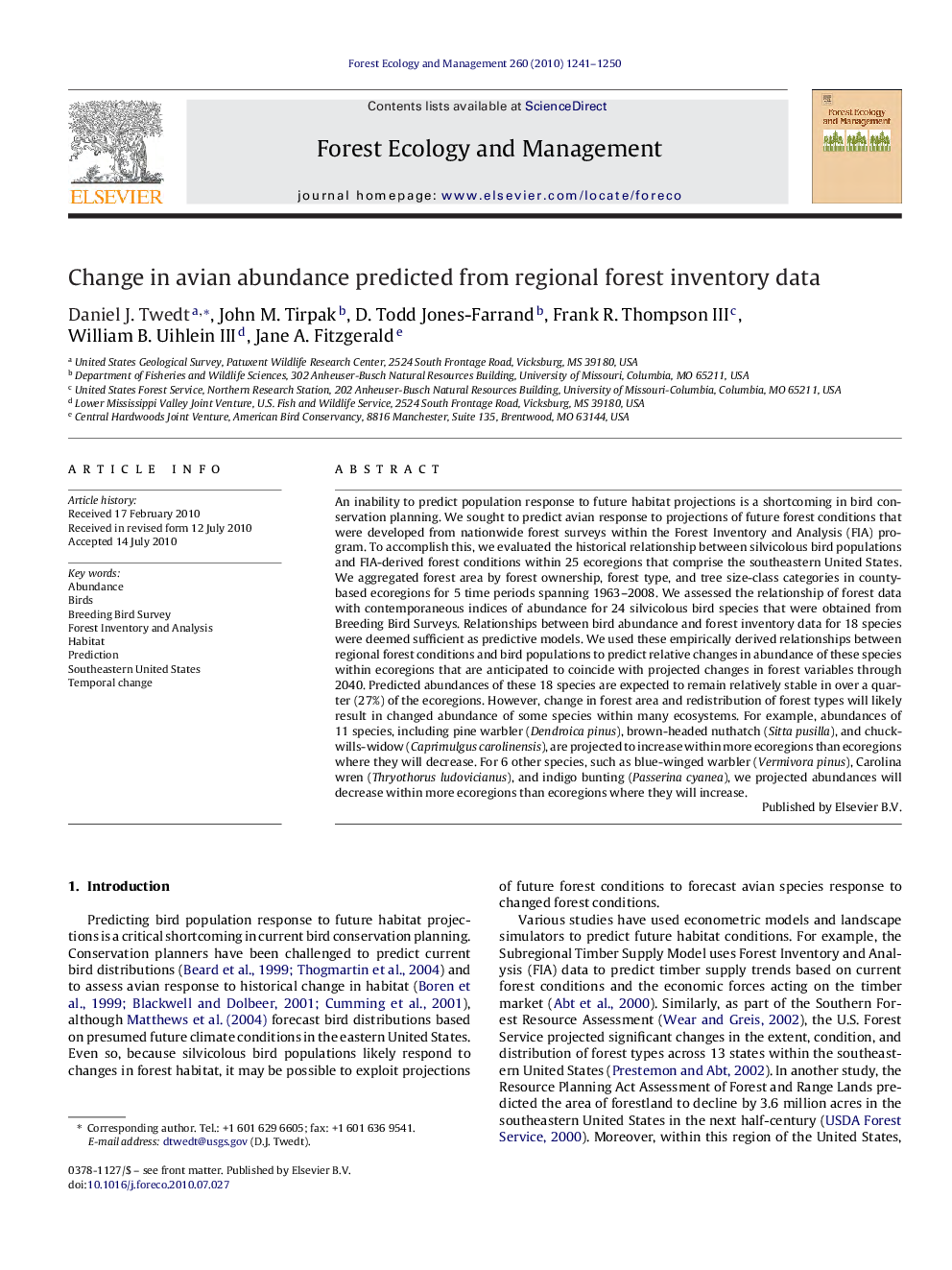| Article ID | Journal | Published Year | Pages | File Type |
|---|---|---|---|---|
| 88118 | Forest Ecology and Management | 2010 | 10 Pages |
An inability to predict population response to future habitat projections is a shortcoming in bird conservation planning. We sought to predict avian response to projections of future forest conditions that were developed from nationwide forest surveys within the Forest Inventory and Analysis (FIA) program. To accomplish this, we evaluated the historical relationship between silvicolous bird populations and FIA-derived forest conditions within 25 ecoregions that comprise the southeastern United States. We aggregated forest area by forest ownership, forest type, and tree size-class categories in county-based ecoregions for 5 time periods spanning 1963–2008. We assessed the relationship of forest data with contemporaneous indices of abundance for 24 silvicolous bird species that were obtained from Breeding Bird Surveys. Relationships between bird abundance and forest inventory data for 18 species were deemed sufficient as predictive models. We used these empirically derived relationships between regional forest conditions and bird populations to predict relative changes in abundance of these species within ecoregions that are anticipated to coincide with projected changes in forest variables through 2040. Predicted abundances of these 18 species are expected to remain relatively stable in over a quarter (27%) of the ecoregions. However, change in forest area and redistribution of forest types will likely result in changed abundance of some species within many ecosystems. For example, abundances of 11 species, including pine warbler (Dendroica pinus), brown-headed nuthatch (Sitta pusilla), and chuck-wills-widow (Caprimulgus carolinensis), are projected to increase within more ecoregions than ecoregions where they will decrease. For 6 other species, such as blue-winged warbler (Vermivora pinus), Carolina wren (Thryothorus ludovicianus), and indigo bunting (Passerina cyanea), we projected abundances will decrease within more ecoregions than ecoregions where they will increase.
Research highlights▶ Relative abundances of silvicolous birds are often related to forest area, type, and seral stage. ▶ Change in future bird populations can be predicted based on projected change in forest conditions. ▶ Information on landscape condition, and forest structure would likely improve reliability of predictive models of future bird abundance.
